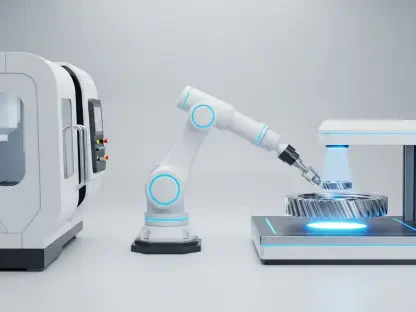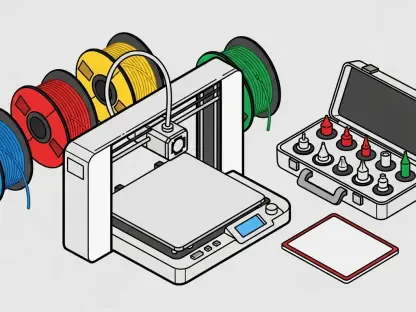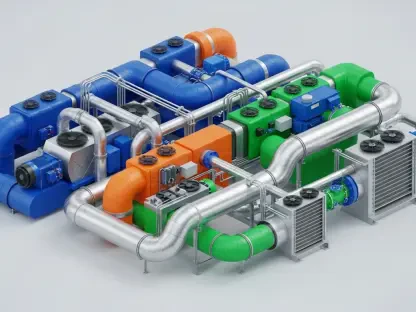What happens when the backbone of global economies becomes a playground for cybercriminals? In the heart of manufacturing plants, where precision and productivity reign, a silent battle is being waged against an invisible enemy. Cyberattacks are no longer just a tech problem—they’re shutting down production lines, stealing trade secrets, and threatening national security. This is the stark reality facing an industry that powers the world, yet remains alarmingly exposed to digital threats.
The Hidden Danger on the Factory Floor
Beneath the relentless hum of machinery lies a vulnerability that few discuss openly. Manufacturing facilities, driven by the need for efficiency, have embraced digital systems to streamline operations, but this very transformation has opened floodgates for cyber adversaries. A single breach can grind an entire plant to a halt, costing millions in downtime and exposing sensitive data to the highest bidder.
The stakes are staggering. With supply chains interconnected across borders, a disruption in one factory can ripple through entire economies, affecting everything from consumer goods to critical infrastructure. Cybercriminals know this, and they’re exploiting it with ruthless precision, targeting an industry that often prioritizes output over defense.
This story matters because manufacturing isn’t just about making things—it’s about sustaining livelihoods and stability. As attacks grow more sophisticated, understanding why this sector is under siege and how it can fight back is not just a business concern; it’s a societal imperative.
The Perfect Storm: Manufacturing’s Role in the Cyber Threat Landscape
Manufacturing stands as a colossal target due to its unparalleled economic weight. As the engine of global trade, it attracts a range of attackers, from profit-driven hackers to nation-state actors seeking geopolitical leverage. Disrupting a major manufacturer can destabilize markets, making it a prize worth pursuing for those with malicious intent.
The convergence of physical and digital systems, often called the Industrial Internet of Things (IIoT), has amplified exposure. While these innovations boost efficiency, they also create a sprawling attack surface that many companies are ill-prepared to defend. Studies reveal that manufacturing ranks among the most targeted industries, with a 2025 report noting a 40% surge in ransomware incidents over the past year alone.
Beyond the numbers, the diversity of motives adds complexity. Some attackers aim to steal intellectual property, gaining a competitive edge by pilfering designs or formulas. Others seek to sabotage operations, holding entire facilities hostage until hefty ransoms are paid. This multifaceted threat landscape underscores why factories are perpetually in the crosshairs.
Unpacking the Vulnerabilities: Why Manufacturers Are Exposed
Dive deeper, and the cracks in manufacturing’s armor become glaringly apparent. Many plants rely on Industrial Control Systems (ICS) that are decades old, running on software with no updates or basic security features. These legacy systems, once isolated, are now connected to networks, making them easy prey for exploits that can manipulate machinery or halt production.
Third-party access adds another layer of risk. Vendors and contractors often require remote entry to maintain equipment, yet oversight of these connections is frequently lax. A compromised vendor account can serve as a gateway for attackers, with insecure tools like outdated VPNs providing little resistance. Real-world cases, such as a 2025 ransomware attack on a major automaker, show how such access points can cripple operations for weeks.
Then there’s the cultural barrier: a deep-seated aversion to downtime. In an industry where every minute of inactivity costs thousands, security updates are often deferred, leaving known vulnerabilities unpatched. This mindset, combined with evolving threats like ransomware tailored for physical disruption, creates a perfect recipe for exploitation, as attackers capitalize on hesitation to strike at critical moments.
Voices from the Front Lines: Insights from Industry Leaders
Those who navigate these challenges daily offer a sobering view of the battlefield. A Chief Information Security Officer (CISO) at a leading manufacturer laments the state of defenses, stating, “Our firewalls are relics, and attackers know exactly how to bypass them.” This frustration echoes across the sector, where outdated tools struggle to keep pace with modern threats.
Operational Technology (OT) engineers, tasked with keeping plants running, face their own dilemmas. One engineer admits, “Vendors connect remotely all the time, but there’s no clear way to track what they’re doing. It’s a blind spot we can’t afford.” This uncertainty highlights a systemic issue: the lack of visibility over external access, which often goes unmonitored until a breach occurs.
Plant managers, balancing production quotas with security concerns, reveal yet another tension. Research from 2025 shows that 60% of manufacturing leaders feel traditional IT security solutions fail to align with factory needs, leaving them caught between operational demands and the looming specter of cyberattacks. These voices collectively paint a picture of an industry racing to adapt before the next strike hits.
Building a Stronger Defense: Actionable Strategies for Manufacturers
Amid the gloom, there’s a path forward for those willing to act. Strengthening cybersecurity in manufacturing doesn’t require halting operations—it starts with smarter access control. Implementing role-based, time-limited access for third-party users ensures that vendors only reach specific systems for the duration needed, slashing the window of opportunity for attackers.
Another critical step is adopting protocol isolation, a method that prevents direct connections between potentially compromised devices and vital systems. This “disconnected access” approach blocks common attack vectors, safeguarding operations without demanding a complete overhaul. Paired with real-time session monitoring and detailed logging, it offers visibility to detect anomalies swiftly and ensure compliance with security standards.
Finally, solutions must fit the unique constraints of manufacturing environments. Tools designed for corporate IT often clash with factory realities, so prioritizing operationally compatible defenses is key. Insights from industry trends in 2025 show a growing adoption of such tailored strategies, proving that reducing risk while maintaining uptime is not only possible but essential for meeting regulatory demands and protecting the bottom line.
Closing Thoughts
Looking back, the journey through manufacturing’s cybersecurity struggles reveals an industry at a pivotal moment. The silent dangers on factory floors have been exposed, vulnerabilities laid bare, and the voices of those on the front lines have painted a vivid picture of urgency. Yet, amidst these challenges, actionable solutions have emerged as beacons of hope. Moving forward, manufacturers must commit to prioritizing access control and adopting tailored defenses that align with operational needs. By investing in innovative tools like protocol isolation and session monitoring, the sector can build resilience against ever-evolving threats. The next steps lie in fostering a culture that values security as much as productivity, ensuring that the backbone of global economies stands firm against digital adversaries for years to come.









